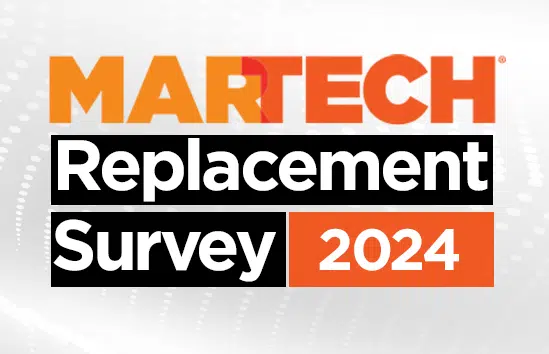Legions of business development and sales development representatives (commonly known as BDRs and SDRs) are out and about every day, working across the globe to drum up business for B2B companies.
This is a popular tactic among SaaS vendors, especially smaller vendors with limited advertising budgets: The vendor's BDRs and SDRs (or the agencies they've hired to fill the role) run cold outbound plays using phone calls, emails, and social media (usually LinkedIn), most often with the goal of booking a demo or introductory meeting.
According to a GTM Partners survey, 86% of B2B companies have adopted an outbound strategy, which is more broadly defined as a combination of account-based marketing (ABM) and sales, content hubs and the use of SDRs. More than half (59%) say they will increase their investment in outbound strategies, while 25% say they will maintain their investment.
If you don't like the cold outreach strategy, you might question its economics: Paying a team of salespeople is costly, and making those teams more efficient requires companies to invest in data and tools that help salespeople find the right prospects and expand their outreach.
Critics of cold outreach say that its somewhat spammy nature can be intrusive and create a bad customer experience for those receiving the outreach, but the reality is that too many cold outreach attempts are often irrelevant and poorly targeted.
If messages are distributed through mass emailing, companies risk violating mass email regulations put in place by email providers such as Google and Yahoo.
The ethics and effectiveness of cold outreach is a topic for another time. In this article, we'll focus on how traditional BDR/SDR strategies are being impacted by new tools like artificial intelligence that enable companies to:
- Conduct more in-depth research before cold outbound.
- Expand your outreach.
- In the process, you protect your email domain and sender reputation.
Perhaps most importantly to the bottom line, companies are running their cold outreach strategies with fewer people than they used to with traditional BDR/SDR strategies. The number of tools now available in this space and the capabilities they provide make this possible.
The actual steps used to conduct cold outreach remain largely the same as they were a few years ago. Reps should:
- Source data about companies and prospects interested in your products or services.
- Enrich your data to include additional information, such as email addresses and phone numbers.
- Clean the data and check for accuracy.
- Send your message.
Cold outreach depends on your stack, not your solution
Many vendors now offer tools to help sales and marketing teams complete these steps. After talking with people who conduct cold outreach and reviewing countless LinkedIn posts on the topic, it's clear that these teams are employing a variety of tools to complete these steps, combining the best features of one tool with the best features of another to create a stack. It seems unlikely that they'll use one or two all-encompassing vendors across the entire set of steps that need to be completed.
This means that a vendor that can both enrich your data and clean up your email list may only be useful for one of those tasks.The same goes for sales engagement tools that offer data assistance for both sending and tracking messages.
Each team combines tools to build their own stack in a way that best suits their needs.
These are the tools most frequently mentioned in conversations with teams using AI and data to scale their cold outreach: This is by no means an exhaustive list of tools available in this space.
Learn more: Understanding the New Spam Policy: A Guide to Effective Cold Email Outreach
Any type of sales effort starts with research. To get the most out of your outbound efforts, you need a list of target accounts. The list can be based on revenue, number of employees, technology deployed, or other attributes. The goal is to identify the companies that are likely to be the best fit for the product or service you offer.
There are many tools available to aid in this research.
- LinkedIn Sales Navigator is a popular option for identifying target companies, but extracting data from LinkedIn isn't easy.
- Apollo.io plays a central role in many of today's cold outreach stacks, as it's not only a source of corporate and personal data, but also a platform for sending emails.
- Other sources that can help identify accounts include Owler, BuiltWith (a source for tech data), Harmonic (specializing in startups), and Crunchbase.
With a list of target accounts in hand, the next step in your cold outreach playbook is to find contact information for people who work at your target companies. It's always difficult to find information about job functions, email addresses, and phone numbers.
Luckily, there are plenty of data sources available today to help you find this information, but buyer beware, as prices and accuracy of information can vary widely from vendor to vendor.
- Clay is one of the most talked about data enrichment vendors among cold outreach professionals. Clay offers access to numerous data sources, including built-in sources and proprietary data sources. Users can set up a “waterfall” approach to data enrichment, telling Clay which sources to try first, which to try next, etc. Clay also uses artificial intelligence to help craft outreach emails.
- Apollo.io also provides contact-level data.
- Cognism is a popular source of contact-level data, especially in Europe.
- Other data enrichment vendors include Seamless.ai, LeadIQ, Lusha, and ZoomInfo.
Dive deeper: Redefining “Lead” in B2B: Why Data Enrichment is Important for Lead Generation
With a contact list of target accounts in hand, many BDRs and SDRs may be tempted to just start messaging them right away. But that's simply not the case.
As email providers like Google and Yahoo crack down on bulk email senders, businesses’ ability to get their outgoing emails to inboxes is at risk. Bounced emails have a negative impact on deliverability.
Using software to clean your lists and avoid bounces can help protect your sender reputation. Options here include Datagma, Dropcontact, Findymail, and (again) Apollo.io.
You need a unique strategy to avoid penalties that email providers can impose on bulk senders. Currently, cold outreach requires multiple email accounts and addresses, warming up IP addresses before sending emails, email validation tools, and more.
Vendors used for cold email outreach include Smartlead and Instantly.ai. As the name suggests, Cold Email Infrastructure is also a player in this space.
If you want to conduct cold outreach via LinkedIn direct messages, HeyReach can help you extend that process.


How AI fits into your cold outreach strategy
Many of the tools used to build cold outreach stacks use artificial intelligence in some form, but back in early 2023, shortly after ChatGPT’s debut, AI was already playing a role in reshaping cold email outreach.
Generative AI has made it easier for sellers to craft outreach emails, a time-consuming task for many sellers. With AI, sellers can scale their content creation, adhere to character and word count limits, and incorporate personalization, all in a fraction of the time it would have taken just a few months ago.
AI has brought true scale to cold outreach, and it’s probably no coincidence that restrictions on mass emailing soon followed.
The future of cold email outreach
Cold email outreach will continue to be a part of B2B vendors’ GTM strategies for the foreseeable future, and the tools mentioned above and similar ones will continue to improve the economics of cold outreach, allowing you to scale while requiring less staff.
Mass email limits will also continue to evolve, creating a cat-and-mouse game similar to the relationship between SEO experts and search engines.
It remains to be seen who will be able to take the lead.
Read more: AI-powered cold emails: the beginning of a nightmare?


